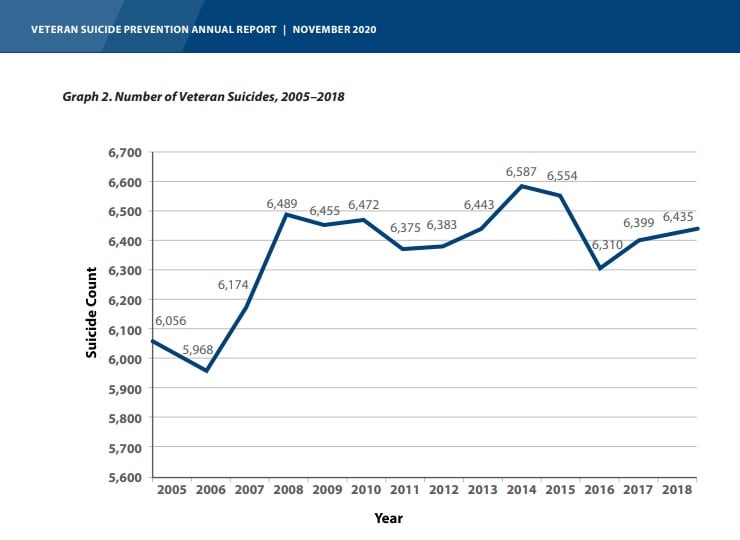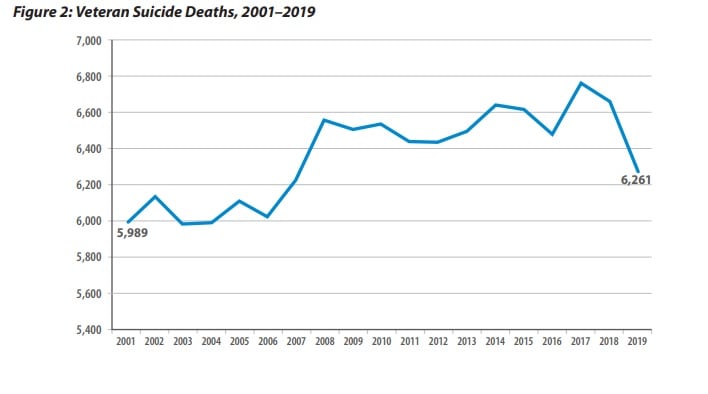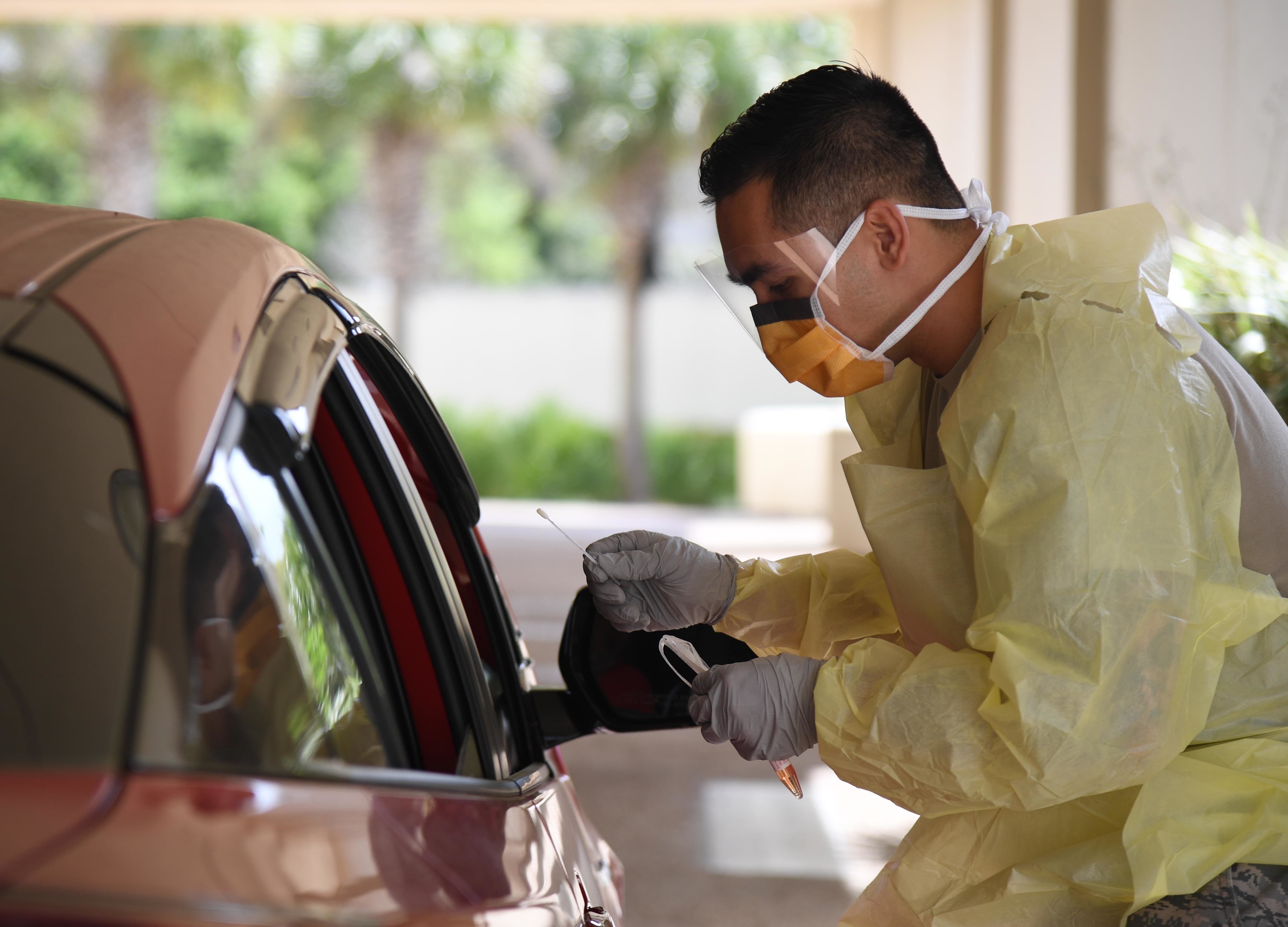Veteran suicides fell to their lowest level in 12 years in 2019, down more than one death a day from the previous year’s levels, according to new data released by the Department of Veterans Affairs on Wednesday.
Despite that, the rate of suicides among veterans remains almost double the rest of the American public, accounting for more than 32,000 deaths from 2015 to 2019, the latest data available.
Veterans Affairs officials called the news a notable improvement, but acknowledged the work still ahead.
“Suicide prevention remains a top priority for VA, with the most significant amount of resources ever appropriated and apportioned to VA suicide prevention,” VA Secretary Denis McDonough said in a statement. “Suicide is preventable, and everyone has a role to play in saving lives.”
RELATED

Federal data on suicide rates have lagged two years behind current conditions, and the latest report from VA does not include any records from the pandemic, which mental health experts warned could exacerbate mental health conditions and lead to suicidal thoughts among individuals.
VA officials said that to date they have not observed increases in “documented suicide-related indicators” during the COVID-19 pandemic, which began in March 2020.
The 6,261 veteran deaths by suicide in 2019 are 399 fewer than 2018 and equate to about 17 per day. That figure is well below the often-quoted “22 a day” statistic regarding veterans suicide, which was based on an estimate used by VA officials a decade ago.
When factoring in active-duty military, reservists and other associated groups, the total is closer to 20 a day.

The last time the total number of veteran suicide deaths was less than 6,200 was 2007, when it was 6,174. It peaked in 2014 at 6,587.
Department researchers noted that the decrease in veteran suicides outpaced reductions in the American public at large. According to the Centers for Disease Control and Prevention, the national suicide rate decreased 2.1 percent. Among veterans, it was down about 7 percent.
“I think you’re seeing the manifestation of core truths within suicide prevention; number one, that suicide is preventable,” said Dr. Matt Miller, director of the VA Suicide Prevention Program. “There are evidence-based programs, intervention actions that can be taken within clinical settings and within community settings that can make a meaningful difference.”
RELATED

VA officials, lawmakers and community advocates have made suicide prevention a top focus of department activities in recent years, with major boosts in mental health resources, outreach programs and community partnerships on the issue.
The drop was particularly pronounced among female veterans. Officials said they saw a nearly 15 percent drop in deaths by suicide among women vets, when adjusted for age.
But suicide remains a significantly higher threat for veterans than the rest of the U.S. public. CDC data shows the rate of death by suicide among all Americans in 2019 was 16.8 per 100,000 individuals. Among veterans that year, it was 31.6 per 100,000.
Suicide prevention officials have also seen a steady increase in the use of firearms in deaths by suicide in recent years, a worrisome trend. About 70 percent of all deaths in 2019 were as a result of firearms.
RELATED

Miller said the department has already put in place new firearms safety training to address that issue, including new public service advertisements.
The full report is available on the department’s web site.
Veterans experiencing a mental health emergency can contact the Veteran Crisis Line at 1-800-273-8255 and select option 1 for a VA staffer. Veterans, troops or their family members can also text 838255 or visit VeteransCrisisLine.net for assistance.
Leo covers Congress, Veterans Affairs and the White House for Military Times. He has covered Washington, D.C. since 2004, focusing on military personnel and veterans policies. His work has earned numerous honors, including a 2009 Polk award, a 2010 National Headliner Award, the IAVA Leadership in Journalism award and the VFW News Media award.



